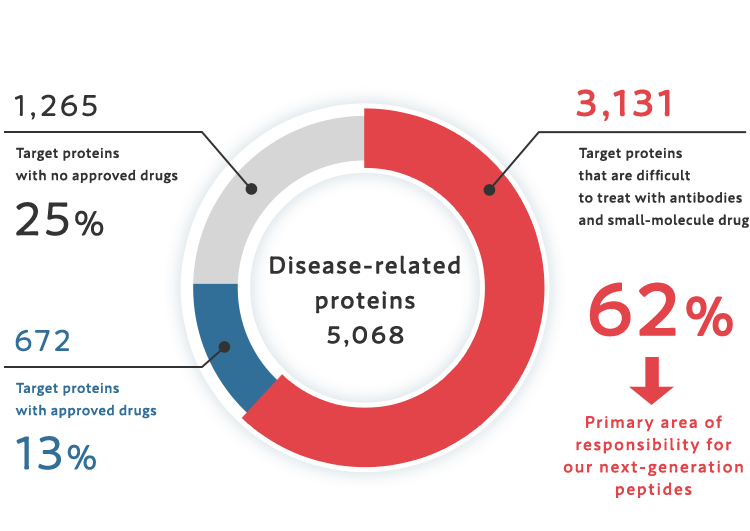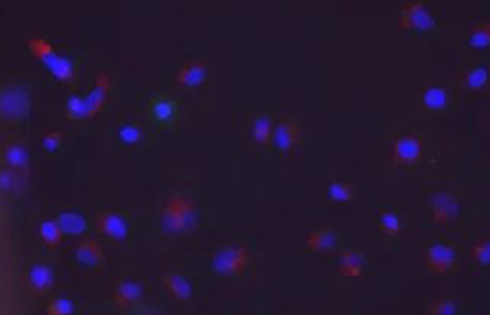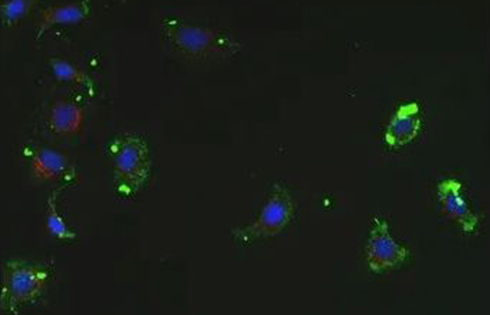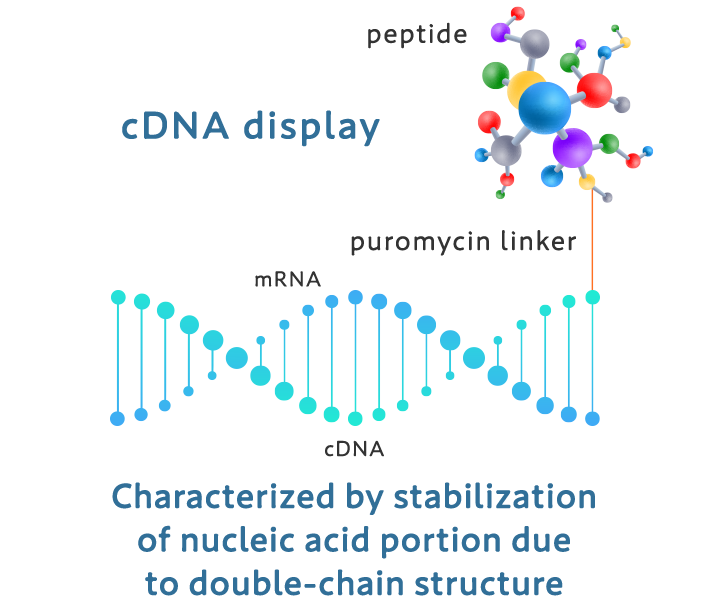Technology introduction
- HOME
- Technology introduction
Why are Next-generation Peptides is so attracting?
Current status and issues regarding pharmaceuticals
・The number of extracellular drug targets is rather few.
・Although there are many intracellular drug targets, highly specific antibodies and nucleic acids can difficultly reach them.

As a solution to those problems, smaller molecules like our Next-generation peptides that are able to reach intracellular drug targets are drawing attention.
Many unexplored intracellular drug targets remain to be discovered.

Partially modified from “Supplementary Explanatory Material for the Interim Evaluation of the Drug Discovery Platform for Realization of Next-generation Therapy and Diagnosis (Multi-Project Program), March 22, 2022, Ministry of Economy, Trade and Industry, Japan.
Characteristics of Next-generation Peptides
Novel drugs that have advantages over conventional drugs.
Unlike classical peptides, next-generation peptides are characterized by their ability to penetrate cell membranes like small molecule drugs, and to interact specifically with intracellular targets like antibodies.
| Small molecule drug | Classical peptide | Next-generation peptide | Antibody drug | |
|---|---|---|---|---|
| Molecular weight | ~1,000 | 500~6,000 | 500~3,000 | approx. 150,000 |
| Specificity | Low | High | High | High |
| Side effects | Much | Less | Less | Less |
| Intracellular target | Targetable | Not targetable | Targetable | Not targetable |
| Oral administration | Possible | Not possible | Possible | Not possible |
| Chemical synthesis | Easy | Easy | Easy | Not easy |
| Production/quality control cost | Low | Low | Low | High |
Partially modified from the table in “Special Feature: Targeting New Targets with Medium Molecular Peptide Drug! , published by Yodosha (Japan) in the Jan. 2023 issue.
Membrane-permeable Next-generation Peptides
We have succeeded in creating several membrane-permeable peptides against cancer and immune cells using our proprietary technology.
Intracellular transfer of GFP by our acquired peptide


Blue: cell nucleus Red: endosome Green: GFP
Prospects of Membrane-Permeable Next-generation Peptides
Targeting Intracellular targets
・Membrane-permeable peptides can be used as carriers for intracellular delivery of antibodies and nucleic acids.
・They can be next-generation molecular-targeted drugs as novel drugs having a high specificity.
・Our peptides enable Next-generation molecular target drugs to reach intracellular targets.
Prospects of Membrane-Permeable Next-generation Peptides
・We are proceeding research on an alternative antibody drug that enables oral administration.
Our proprietary technologies are supporting the search for membrane-permeable Next-generation Peptides

Display Technology
Display technology consists of both a library of over 1 trillion different peptide sequences and a screening tool to indicate peptides that have desired properties.